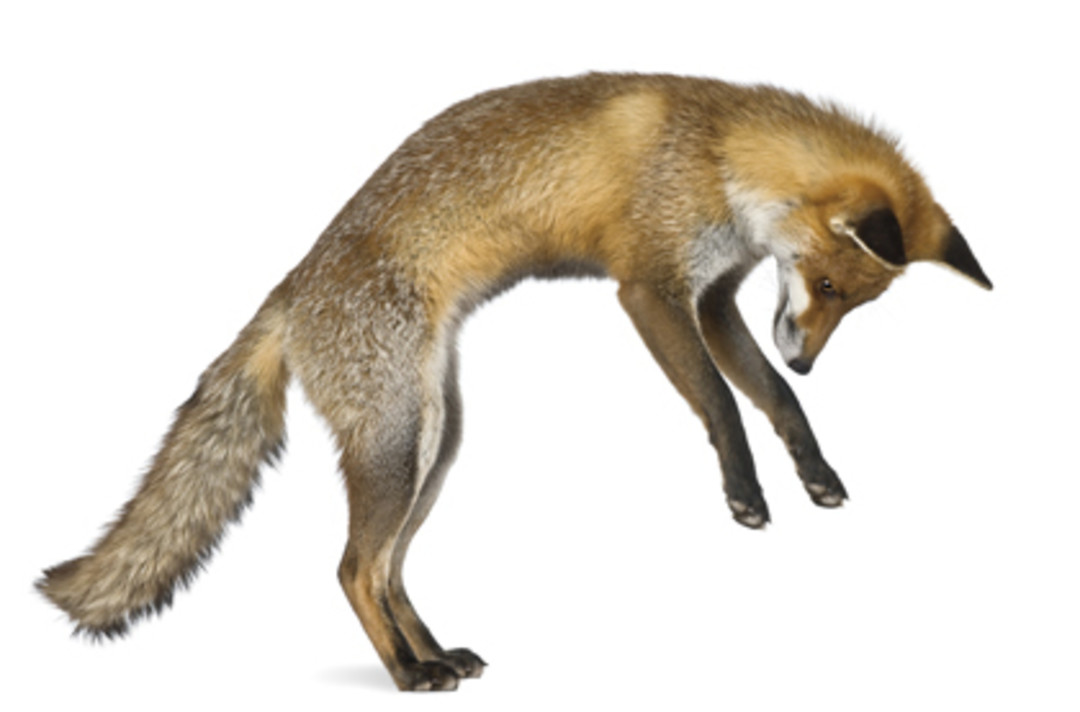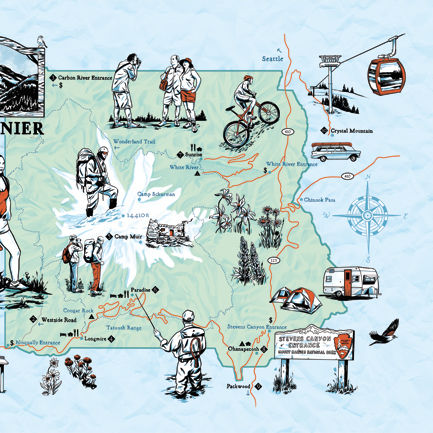Mount Rainier’s Red Fox Menace

Red foxes were once a prized sighting at Mount Rainier. I’d been going to the mountain for nearly a quarter century before I saw one. But this year I’ve seen three foxes in three trips. That’s not good luck. That’s a problem.
Over the past few years Rainier’s red foxes have discovered that humans are generous slobs. We rain crumbs from our pockets, picnic tables, and Subarus. Presented with a safe, easy supply of food, foxes do what all species do: They adapt.
“They’ve learned to forage in parking lots and along roadways,” Mason Reid told me recently. Reid, a 54-year-old National Park Service wildlife ecologist, spends part of his working day tracking the foxes—he’s currently got GPS radio collars on three of them—and devising strategies to make them a little less louche around humans.
The thing is, Reid doesn’t have a fox problem. He’s got a people problem.
Once spotted, a fox is nearly impossible to resist. One Paradise loiterer is a silver-phase red fox; its gray-tipped black fur gives it the look of a streamlined wolf. Back in April, I spied it parading atop a roadside snowbank like a cheap hooker strutting her wares. I stopped and watched, mesmerized. The fox padded with such silent grace. When it began moving toward me with an
expectant “got grub?” look, I left the scene a little sadder for the encounter. A fox that advances on a human is a fox whose days are numbered. I resisted the urge to buy his attention with foodstuffs, but others won’t.
At Yellowstone, the problem required a public campaign so relentless that its simple slogan—“Don’t Feed the Bears”—became part of the vernacular. Maybe we need a similar slogan. “Let Them Eat Chipmunks”? Or perhaps a little Dr. Seuss: “Fed Fox, Dead Fox.” We’ve seen this before. In the 1950s, Yellowstone visitors lined up to feed black bears and grizzlies from the comfort of their Oldsmobiles. It took generations to return the bears to their natural human-wary state. In the meantime, a lot of bears became aggressive “problem bears” and were killed because of it. At Rainier, the foxes don’t even need to get pushy to become problems; they just have to get close. Reid is already counting the toll taken by the allure of humans and our roads. “We’ve had five foxes injured or killed by vehicles over the past few years,” he says.
Reid’s open to suggestions. Last summer a ranger tried scaring off the foxes with a Super Soaker. That had limited effect. Now park officials are talking about writing up $150 citations for visitors caught feeding the critters. “We need the public to do its part,” Reid says. “We need to let these foxes be a natural species again.”











